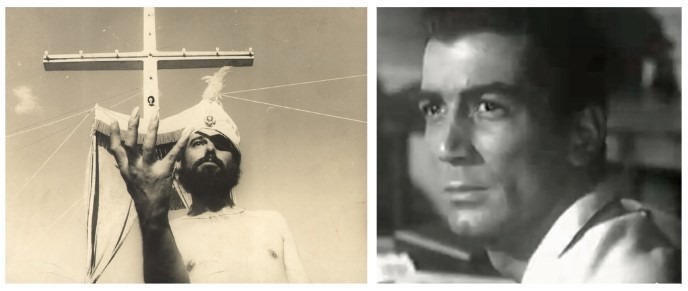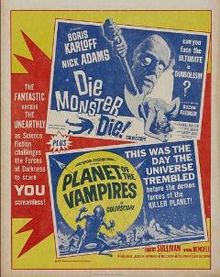Psychedelic Nightmares: Surrealism and Horror in the 1960s

In the 1960s, you'll find horror cinema investigating into a mind-bending excursion through consciousness. Directors like José Mojica Marins merged psychedelic experiences with surrealist imagery, creating films that break traditional scary movie rules. They used bold colors, warped visuals, and disorienting camera work to pull you into nightmarish dreamscapes. This new breed of psychological terror didn't just show monsters - it probed the darkness within your own mind. The rabbit hole goes much deeper than you'd expect.
The Rise of Mind-Bending Cinema in the Counterculture Era
While the cultural revolution of the 1960s reshaped many aspects of American society, its most significant impact on cinema emerged through the lens of psychedelic horror. You'll find that filmmakers began exploring the terrifying depths of consciousness, inspired by the widespread use of LSD and other mind-altering substances.
Directors like José Mojica Marins pushed boundaries by creating films that mimicked the visual intensity of an acid trip, converting the horror movie genre from physical scares to psychological terror. Mojica Marins and his contemporaries tapped into the counterculture's fascination with altered states, crafting narratives that blended cosmic dread with transcendental experiences.
Their innovative approach to horror focused on the mind's capacity for terror, using surreal imagery and experimental techniques that would influence generations of filmmakers to come. Drawing inspiration from the distorted visual style of German Expressionism films, these psychedelic horror films created nightmarish dreamscapes that challenged viewers' perception of reality.

Experimental Techniques: Playing With Color, Sound, and Reality
The radical vision of 1960s horror filmmakers manifested through pioneering experimental techniques that redefined the genre's visual language. You'll find these psychedelic horror films saturated with bold colors and warped visuals that pull you into their nightmarish dreamscapes.
The horror of these films doesn't just come from their stories - it's embedded in their very technique. Through rapid cuts and non-linear editing, you're forced to experience the fragmentary, disorienting viewpoint of a character lost in a psychedelic nightmare.
What makes these films particularly unsettling is how they assault your senses. Directors wielded unconventional camera angles and jarring close-ups while experimental soundtracks filled with dissonant noise heightened the tension. You're never quite sure what's real as the boundaries between reality and hallucination dissolve before your eyes. Films like Carnival of Souls demonstrated how low-budget productions could create surreal, haunting atmospheres that would influence horror cinema for decades to come.
Child's Eye View: Through the Lens of Innocence and Terror
During the 1960s, horror filmmakers unearthed a powerful narrative tool by adopting a child's viewpoint to amplify psychological terror. "The Snake Girl and The Silver-Haired Witch" exemplifies this approach, taking you on a psychological trip through Sayuri's eyes as she navigates a threatening mansion filled with surreal horrors.
Like a BAD TRIP, the film's psychedelic visuals blur reality and nightmare, reflecting a child's vivid imagination when confronted with the inexplicable. You're pulled into Sayuri's helpless position as adults dismiss her fears, creating a suffocating atmosphere of isolation.
This technique, also seen in modern films like "Skinamarink," transforms ordinary spaces into threatening domains through innocent eyes. By leveraging a child's limited understanding and agency, these films tap into our primal fears of powerlessness and vulnerability.
Much like early spirit photography influenced the first horror films, these child-perspective stories use visual manipulation to blur the line between reality and supernatural phenomena.
Breaking Traditional Horror Conventions: New Ways to Scare
Psychedelic horror films of the 1960s shattered conventional scares by diving deep into the human psyche. Instead of relying on monsters lurking in shadows, these films confronted you with something far more unsettling: the darkness within your own mind.
Even though traditional horror films focused on physical threats, psychedelic horror weaponized surreal visuals and disorienting narratives to create a weighty sense of cosmic dread. You'll find yourself questioning reality as directors manipulated spatial awareness and non-linear storytelling to blur the line between hallucination and truth.
These films transformed your viewing experience into a nightmarish excursion through consciousness itself, challenging everything you thought you knew about fear. They replaced predictable jump scares with an existential unease that lingers long after the credits roll.

Ray Danton in trailer for "The George Raft Story" (1961)
The Impact of Psychedelic Culture on Horror Filmmaking
Widespread LSD use in 1960s America triggered a wave of creative experimentation that revolutionized horror filmmaking. Much like the rock n roll movement challenged musical boundaries, directors began pushing the limits of traditional horror, trading physical scares for psychological terror.
Directors like José Mojica Marins and Ray Danton crafted stories that probed the mind's darkest corners, using psychedelic imagery to investigate inner fears. Their innovative approach transformed horror cinema by introducing cosmic vertigo and spatial-temporal distortions that captured the intense, disorienting nature of psychedelic experiences. This new visual language permanently altered how audiences perceived and experienced horror films.
You'll notice how films like The Sorcerers and The Dunwich Horror broke new ground by incorporating vivid colors, warped viewpoints, and surreal narratives that mimicked acid trips.

Creature Features Meet Art House: A Unique Fusion
The collision of creature features with art house sensibilities gave birth to some of cinema's most striking horror experiments in the 1960s. You'll find visionary directors like Roger Corman and Mario Bava investigating traditional monster movies into surreal nightmares, using bold colors and abstract sequences that mirror the era's expanding consciousness.
Much like "Easy Rider" captured the counterculture zeitgeist, these horror films tapped into the mind-bending potential of psychedelia. Films like "The Masque of the Red Death" and "Planet of the Vampires" didn't just frighten - they disorientated and unsettled you with their dreamlike aesthetics.
These movies deliberately recreated the terrifying aspects of a "bad trip," pushing beyond conventional scares to examine deeper psychological territory. In doing so, they created a unique cinematic language that merged exploitation thrills with artistic ambition.
The Role of Dreams and Nightmares in '60s Horror
Dreams became the dark canvas where 1960s horror filmmakers painted their most haunting visions. As psychedelic drug culture took hold, directors began exploring the thin line between reality and nightmare in unprecedented ways.
You'll find this creative shift perfectly exemplified in Herk Harvey's "Carnival of Souls," where dreamlike sequences blur the boundaries of the protagonist's perception.
The trend continued with José Mojica Marins' disturbing "At Midnight I'll Take Your Soul," which investigates the twisted psyche of Coffin Joe through surreal visions. Roger Corman's "The Masque of the Red Death" embraces psychedelic imagery to heighten its horrific impact, while Jack Hill's "Spider Baby" creates an unsettling dreamscape through its portrayal of a family's mental deterioration.
These films transformed nightmares into a powerful storytelling tool, forever changing horror's visual language.
Psychological Horror: Exploring Inner Demons and Altered States
Influenced by the counterculture's fascination with mind-altering substances, psychological horror films of the 1960s delved deep into humanity's darkest corners. Directors like Michael Reeves and José Mojica Marins tapped into societal anxieties by creating unsettling narratives that blurred the line between reality and hallucination.
These films reflected the era's growing unease through:
- Surreal visual techniques that mimicked psychedelic experiences
- Gothic horror elements merged with hallucinatory imagery
- Narratives focusing on the fragility of human consciousness
- Investigations into mental destabilization and inner terrors
You'll find this particularly evident in works like "The Sorcerers" (1967) and "The Dunwich Horror" (1970), where the horror stems not from external monsters, but from the psychological depths of human experience. These films captured the darker side of consciousness examination, turning drug-induced revelations into nightmare fuel.
Legacy and Influence on Modern Horror Cinema
Modern horror cinema carries forward the psychedelic torch lit by 1960s surrealist horror, with directors like Ari Aster drawing heavily from this revolutionary era. You'll find clear intergenerational inspiration in today's elevated horror films, which mirror the dreamlike qualities and psychological depth of classics like Carnival of Souls and Spider Baby.
The experimental visual style and consciousness-bending narratives of 1960s horror have evolved into sophisticated explorations of the human psyche in contemporary films. You'll notice how today's indie horror creators increase the kaleidoscopic imagery and metaphysical themes pioneered by their predecessors, pushing beyond conventional scares to probe deeper existential terrors. This artistic lineage continues to shape the genre, as filmmakers blur reality and nightmare while exploring the dark corners of human perception.




